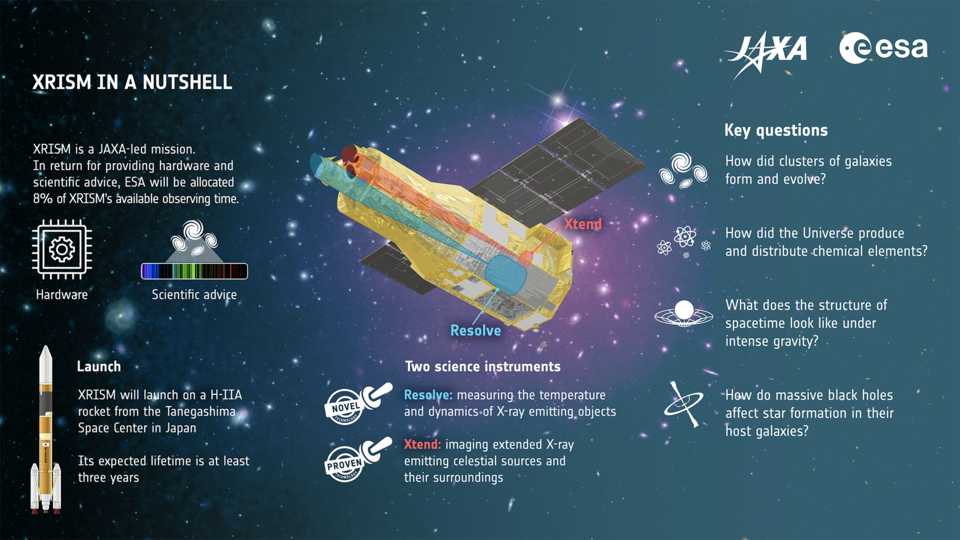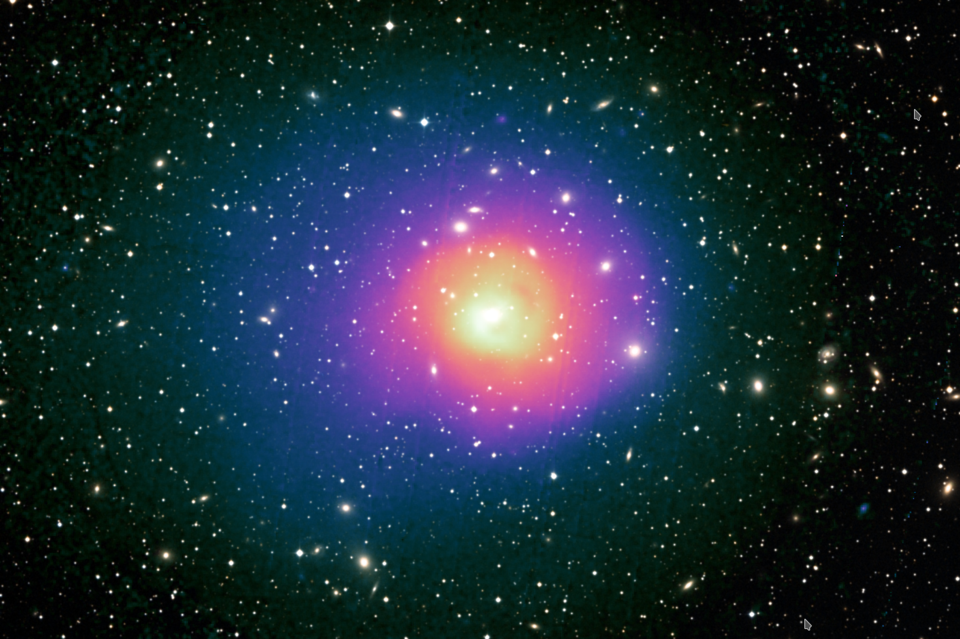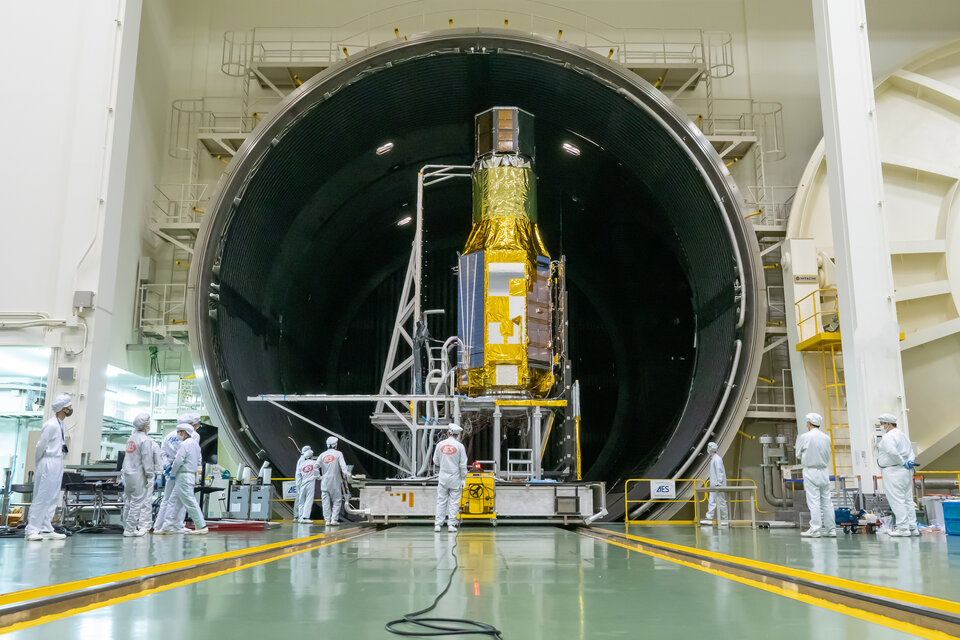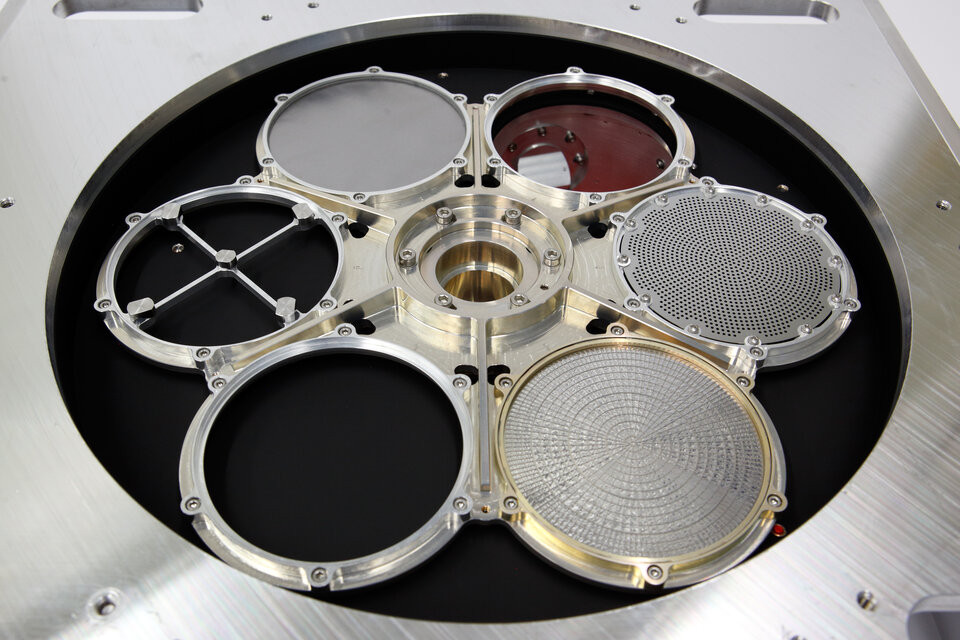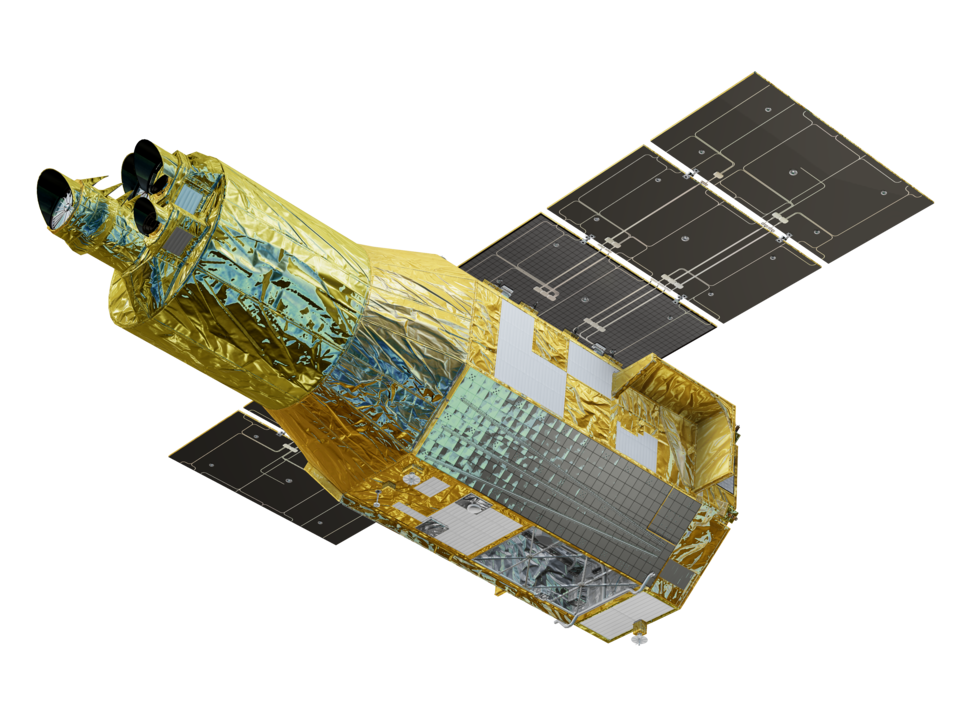The new schedule was announced a week after the previous launch attempt, which would have carried Japan's first spacecraft to land on the moon, was suspended because of high winds.
H-IIA, jointly developed by JAXA and MHI, has been Japan's flagship space launch vehicle, with 45 successful launches in 46 tries since 2001. After JAXA's new medium-lift H3 rocket failed on its debut in March, the agency postponed the launch of H-IIA No. 47 for several months to investigate the cause.
Hoping to help accelerate Japan's aerospace development initiatives, Japan may subsidize JAXA with about 10 billion yen ($68.4 million) in fiscal 2024, the Yomiuri newspaper reported on Monday.
JAXA will use this subsidy to pay companies and universities involved in the development of satellites, rockets, and lunar-exploration technologies, the report said.
Quelle: Reuters
+++
Japan's delayed H2A rocket carrying lunar lander to launch on Sept. 7
The postponed liftoff of an H2A rocket carrying the Japanese space agency's lunar lander has been set for Thursday, Mitsubishi Heavy Industries Ltd. said Monday.
The domestically produced rocket is planned to take off around 8:42 a.m. Thursday from Tanegashima Space Center on Tanegashima Island in the southwestern prefecture of Kagoshima, the company said. The move follows a postponement due to strong winds a week earlier that was decided around 30 minutes before the planned liftoff.
As part of its payload, the rocket will carry the Japan Aerospace Exploration Agency-developed SLIM lunar lander, which will test technology for pinpoint landings on the Moon's surface.
SLIM is expected to enter the Moon's orbit some three to four months after being launched and to attempt to reach the lunar surface in four to six months.
Data gathered by Japan from the Moon will be used in the U.S-led Artemis project, which aims at returning humans to the Moon by 2025 and advancing lunar exploration. The ultimate goal is for humans to explore Mars.
Japan's attempt to carve out its place in the international field of satellite launching and space exploration has been hit by multiple setbacks this year including the March failure of the next-generation H3 rocket.
Quelle: Kyodo News
+++
Launch Schedule of
the X-ray Imaging and Spectroscopy Mission (XRISM)
and the Smart Lander for Investigating Moon (SLIM)
onboard the H-IIA Launch Vehicle No. 47 (H-IIA F47)
[Rescheduled]
September 4, 2023 (JST)
Japan Aerospace Exploration Agency
The new launch date for the H-IIA Launch Vehicle No. 47 with the X-ray Imaging and Spectroscopy Mission (XRISM) and the Smart Lander for Investigating Moon (SLIM) onboard has been set as follows:
| Launch date | : September 7, 2023 |
|---|---|
| Launch Time | : 8:42:11 A.M. (JST)* |
| Reserved Launch Period | : September 8 through September 15, 2023 |
| Launch site | : Yoshinobu Launch Complex at the JAXA Tanegashima Space Center |
We will reassess whether the launch on September 7 will be possible or not based on the weather conditions.
(*) The launch time during the reserved launch period will be set each day.
Quelle: JAXA
----
Update: 7.09.2023
.
Japan launches rocket carrying lunar lander and X-ray telescope to explore origins of universe
Japan has launched a rocket with an X-ray telescope that will explore the origins of the universe

TOKYO -- Japan launched a rocket Thursday carrying an X-ray telescope that will explore the origins of the universe as well as a small lunar lander.
The launch of the HII-A rocket from Tanegashima Space Center in southwestern Japan was shown on live video by the Japan Aerospace Exploration Agency, known as JAXA.
“We have a liftoff,” the narrator at JAXA said as the rocket flew up in a burst of smoke then flew over the Pacific.
Thirteen minutes after the launch, the rocket put into orbit around Earth a satellite called the X-Ray Imaging and Spectroscopy Mission, or XRISM, which will measure the speed and makeup of what lies between galaxies.
That information helps in studying how celestial objects were formed, and hopefully can lead to solving the mystery of how the universe was created, JAXA says.
In cooperation with NASA, JAXA will look at the strength of light at different wavelengths, the temperature of things in space and their shapes and brightness.
David Alexander, director of the Rice Space Institute at Rice University, believes the mission is significant for delivering insight into the properties of hot plasma, or the superheated matter that makes up much of the universe.
Plasmas have the potential to be used in various ways, including healing wounds, making computer chips and cleaning the environment.
“Understanding the distribution of this hot plasma in space and time, as well as its dynamical motion, will shed light on diverse phenomena such as black holes, the evolution of chemical elements in the universe and the formation of galactic clusters,” Alexander said.
Also aboard the latest Japanese rocket is the Smart Lander for Investigating Moon, or SLIM, a lightweight lunar lander. The Smart Lander won’t make lunar orbit for three or four months after the launch and would likely attempt a landing early next year, according to the space agency.
The lander successfully separated from the rocket about 45 minutes after the launch and proceeded on its proper track to eventually land on the moon. JAXA workers applauded and bowed with each other from their observation facility.
JAXA is developing “pinpoint landing technology” to prepare for future lunar probes and landing on other planets. While landings now tend to be off by about 10 kilometers (6 miles) or more, the Smart Lander is designed to be more precise, within about 100 meters (330 feet) of the intended target, JAXA official Shinichiro Sakai told reporters ahead of the launch.
That allows the box-shaped gadgetry to find a safer place to land.
The move comes at a time when the world is again turning to the challenge of going to the moon. Only four nations have successfully landed on the moon, the U.S., Russia, China and India.
Last month, India landed a spacecraft near the moon's south pole. That came just days after Russia failed in its attempt to return to the moon for the first time in nearly a half century. A Japanese private company, called ispace, crashed a lander in trying to land on the moon in April.
Japan’s space program has been marred by recent failures. In February, the H3 rocket launch was aborted for a glitch. Liftoff a month later succeeded, but the rocket had to be destroyed after its second stage failed to ignite properly.
Japan has started recruiting astronaut candidates for the first time in 13 years, making clear its ambitions to send a Japanese to the moon.
Going to the moon has fascinated humankind for decades. Under the U.S. Apollo program, astronauts Neil Armstrong and Buzz Aldrin walked on the moon in 1969.
The last NASA human mission to the moon was in 1972, and the focus on sending humans to the moon appeared to wane, with missions being relegated to robots.
Quelle: abcNews
+++
JAXA’s H-2A rocket safely puts satellite, lunar probe in orbit

TANEGASHIMA, Kagoshima Prefecture--The Japan Aerospace Exploration Agency (JAXA) turned to a tried-and-true rocket for a successful launch on Sept. 7 after a recent string of failures with other rocket models.
The H-2A Launch Vehicle No. 47 blasted off from the Tanegashima Space Center here at around 8:42 a.m., and its payload was later confirmed to be safely in orbit.
Fourteen minutes after the launch, the X-ray astronomy satellite XRISM was placed in orbit, and 33 minutes later, the Smart Lander for Investigating Moon (SLIM) probe was also placed in orbit.
XRISM is designed to replace the Hitomi X-ray astronomy satellite, which ceased operations two months after it was launched in 2016.
XRISM will orbit the Earth at an altitude of about 550 kilometers and observe X-rays emitted by celestial objects and hot gas to help unravel the origins of the universe.
The SLIM probe will attempt Japan’s first landing on the moon between January and February. The aim is to place the probe within 100 meters of its targeted landing site.
A successful landing would make Japan the fifth nation to do so, following the former Soviet Union, the United States, China and India.
The H-2A rocket was first launched in 2001 and until January 2023, there had been only one failed launch out of 46 attempts.
There are plans to use the rocket until Launch Vehicle 50.
Its successor, H-3 rocket, has had a rocky start, with its first launch in March ending in failure.
JAXA has also experienced problems with its Epsilon rocket. The Epsilon-6 rocket had to be ordered to self-destruct shortly after liftoff in October 2022 because of a malfunction. In addition, an Epsilon S rocket engine exploded during a test in July.
Quelle: The Asahi Shimbun
----
Update: 7.01.2024
.
NASA/JAXA XRISM Mission Reveals Its First Look at X-ray Cosmos
The Japan-led XRISM (X-ray Imaging and Spectroscopy Mission) observatory has released a first look at the unprecedented data it will collect when science operations begin later this year.
The satellite’s science team released a snapshot of a cluster of hundreds of galaxies and a spectrum of stellar wreckage in a neighboring galaxy, which gives scientists a detailed look at its chemical makeup.
“XRISM will provide the international science community with a new glimpse of the hidden X-ray sky,” said Richard Kelley, the U.S. principal investigator for XRISM at NASA’s Goddard Space Flight Center in Greenbelt, Maryland. “We’ll not only see X-ray images of these sources, but also study their compositions, motions, and physical states.”

XRISM (pronounced “crism”) is led by JAXA (Japan Aerospace Exploration Agency) in collaboration with NASA, along with contributions from ESA (European Space Agency). It launched on Sept. 6, 2023.
It’s designed to detect X-rays with energies up to 12,000 electron volts and will study the universe’s hottest regions, largest structures, and objects with the strongest gravity. For comparison, the energy of visible light is 2 to 3 electron volts.
The mission has two instruments, Resolve and Xtend, each at the focus of an X-ray Mirror Assembly designed and built at Goddard.
Resolve is a microcalorimeter spectrometer developed by NASA and JAXA. It operates at just a fraction of a degree above absolute zero inside a refrigerator-sized container of liquid helium.
When an X-ray hits Resolve’s 6-by-6-pixel detector, it warms the device by an amount related to its energy. By measuring each individual X-ray’s energy, the instrument provides information previously unavailable about the source.

The mission team used Resolve to study N132D, a supernova remnant and one of the brightest X-ray sources in the Large Magellanic Cloud, a dwarf galaxy around 160,000 light-years away in the southern constellation Dorado. The expanding wreckage is estimated to be about 3,000 years old and was created when a star roughly 15 times the Sun’s mass ran out of fuel, collapsed, and exploded.
The Resolve spectrum shows peaks associated with silicon, sulfur, calcium, argon, and iron. This is the most detailed X-ray spectrum of the object ever obtained and demonstrates the incredible science the mission will do when regular operations begin later in 2024.
“These elements were forged in the original star and then blasted away when it exploded as a supernova,” said Brian Williams, NASA’s XRISM project scientist at Goddard. “Resolve will allow us to see the shapes of these lines in a way never possible before, letting us determine not only the abundances of the various elements present, but also their temperatures, densities, and directions of motion at unprecedented levels of precision. From there, we can piece together information about the original star and the explosion.”
XRISM’s second instrument, Xtend, is an X-ray imager developed by JAXA. It gives XRISM a large field of view, allowing it to observe an area about 60% larger than the average apparent size of the full moon.

Xtend captured an X-ray image of Abell 2319, a rich galaxy cluster about 770 million light-years away in the northern constellation Cygnus. It’s the fifth brightest X-ray cluster in the sky and is currently undergoing a major merger event.
The cluster is 3 million light-years across and highlights Xtend’s wide field of view.
“Even before the end of the commissioning process, Resolve is already exceeding our expectations,” said Lillian Reichenthal, NASA’s XRISM project manager at Goddard. “Our goal was to achieve a spectral resolution of 7 electron volts with the instrument, but now that it’s in orbit, we’re achieving 5. What that means is we’ll get even more detailed chemical maps with each spectrum XRISM captures.”
Resolve is performing exceptionally and already conducting exciting science despite an issue with the aperture door covering its detector. The door, designed to protect the detector before launch, has not opened as planned after several attempts. The door blocks lower-energy X-rays, effectively cutting the mission off at 1,700 electron volts compared to the planned 300. The XRISM team will continue to explore the anomaly and is investigating different approaches to opening the door. The Xtend instrument is unaffected.
NASA’s XRISM General Observer Facility, hosted at Goddard, is accepting proposals for observations from members of U.S. and Canadian institutions through Thursday, April 4. Cycle 1 of XRISM General Observer investigations will begin in the summer of 2024.
XRISM is a collaborative mission between JAXA and NASA, with participation by ESA. NASA’s contribution includes science participation from the Canadian Space Agency.
Quelle: NASA
----
Update: 15.05.2024
.
NASA and JAXA to operate XRISM as-is despite instrument issue

WASHINGTON — NASA and the Japanese space agency JAXA plan to operate an instrument on an X-ray astronomy satellite as-is for at least the next year and a half despite an issue affecting one of its instruments.
JAXA launched the X-ray Imaging and Spectroscopy Mission (XRISM) in September 2023 and the spacecraft, whose instruments were developed in collaboration with NASA, has started its prime science mission. XRISM carries two instruments to conduct X-ray astronomy.
In January, project scientists said that XRISM was working well except for an aperture door, also called a gate valve, for the Dewar on its imaging instrument, Resolve, which failed to open. The instrument can still operate with the door closed, although the door, made of beryllium, does attenuate some X-rays at lower energies.
At the time, efforts were underway to try and open the gate valve. However, speaking at a May 7 meeting of the National Academies’ Board on Physics and Astronomy, Mark Clampin, director of NASA’s astrophysics division, said those efforts were on hold for the next year and a half.
“We decided that the best course of action right now is to move forward with the science program for the next 18 months,” he said, saying that the instrument is still doing “really great science” despite the valve being stuck in place. “We believe that the best approach is to spend the next 18 months collecting science data with this mission before another attempt is made to try to dislodge the gate valve.”
The valve was supposed to be moved out of the way through two non-explosive actuators. “We believe, based on the information that we have been given by the Japanese, that there is probably a snag on a harness attached to one of the non-explosive actuators, which is preventing the valve from moving out of the way.”
One reason for the delay, he said, is the difficulty dealing with harness at cryogenic temperatures. The proposed fixes for the harness, he said, involve managing temperatures of part of the instrument as well as putting “some kind of perturbation” into it to shake the harness loose. “We believe right now the lowest-risk approach is to continue getting science, and we’ll come back to the gate valve in 18 months.”
NSF astronomy budget challenges
In his presentation, Clampin briefly touched on budget issues facing his decision, including proposals to review changes to operations of the Chandra X-Ray Observatory and Hubble Space Telescope to reduce their costs. Those efforts are ongoing, he said, with no major updates on their progress.
NASA is not the only agency facing difficulty funding major astronomy programs. Later in the board meeting, R. Chris Smith, interim director of the astronomical sciences division at the National Science Foundation, said his agency had recently decided to halt work on a major ground-based astrophysical project.
That project, called CMB-S4, had planned to establish an observatory at the South Pole to study the cosmic microwave background, a signature of the Big Bang at microwave wavelengths, to better understand the early history of the universe as well as dark matter and dark energy. It was one of the top priorities for groundbased facilities in the Astro2020 decadal survey as well as a separate review of priorities in particle physics.
Smith announced at the board meeting that NSF had decided not to move CMB-S4 into its next phase of development, called Major Facility Design Stage, at the current time. He cited the needs for NSF to invest in overall infrastructure at the South Pole.
“The agency must prioritize the recapitalization of the critical infrastructure at the South Pole,” he said. That work, he said, would support a wide range of science done at the South Pole, not just astrophysics, stating later that CMB-S4 could move forward at some later, undefined date.
One factor in that decision is the agency’s budget. NSF requested $11.3 billion in fiscal year 2024 but received less than $9.1 billion. Smith said NSF is still working on an operating plan for 2024, with no details yet how it would affect work at its various divisions, including astronomical sciences.
That is also affecting how the NSF approaches the highest groundbased astronomy priority in Astro2020, support for the U.S. Extremely Large Telescope (US-ELT) program. That would provide funding for two large telescopes under development now, the Thirty Meter Telescope (TMT) and Giant Magellan Telescope (GMT). NSF would partially fund both telescopes and get a share of observing time it would make available to the broader astrophysics community.
The NSF announced in March that the National Science Board had recommended NSF proceed with support of just one of the two telescopes, with a cost cap of $1.6 billion. That came at the same time as the report accompanying the final fiscal year 2024 appropriations bill included language that “strongly encourages” the NSF to support both US-ELT telescopes.
Smith said at the board meeting that the NSF, at a May 2 meeting, formally kicked off the process to decide with of the two large telescope projects. The director of NSF, Sethuraman Panchanathan, formally directed the agency to begin an external review that will provide him with advice on whether to support either telescope.
That review will examine the progress GMT and TMT have made since their preliminary design reviews and how they are mitigating various risks. The review will also examine how going forward with either telescope would affect overall NSF resources.
Smith said that review is scheduled to be completed by September, but didn’t indicate when NSF would formally select one of the telescope projects for agency support.
Quelle: SN




